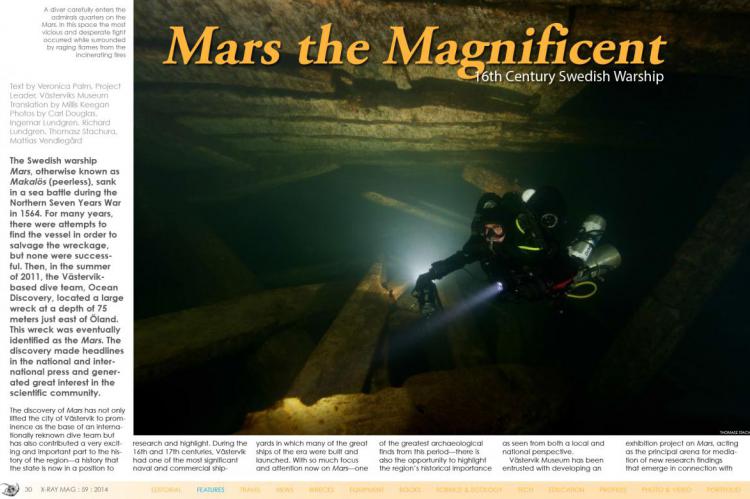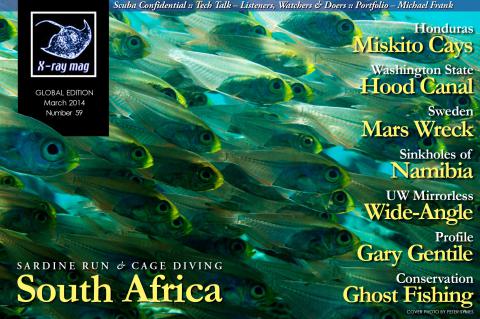Mars the Magnificent: 16th Century Swedish Warship
The Swedish warship Mars, otherwise known as Makalös (peerless), sank in a sea battle during the Northern Seven Years War in 1564.
Tags & Taxonomy
The discovery of Mars has not only lifted the city of Västervik to prominence as the base of an internationally reknown dive team but has also contributed a very exciting and important part to the history of the region—a history that the state is now in a position to research and highlight. During the 16th and 17th centuries, Västervik had one of the most significant naval and commercial shipyards in which many of the great ships of the era were built and launched. With so much focus and attention now on Mars—one of the greatest archaeological finds from this period—there is also the opportunity to highlight the region’s historical importance as seen from both a local and national perspective.
Västervik Museum has been entrusted with developing an exhibition project on Mars, acting as the principal arena for mediation of new research findings that emerge in connection with the Mars project over the coming years. Efforts to produce films, exhibitions and publications on Mars and its contemporaries have begun. Through generous contributions from Sparbanksstiftelsen Tjust district and Västervik, as well as the efforts of scientists from the MARIS maritime archaeology research institute at Södertörn University and the Swedish National Defence College, several divers and maritime companies, and the Swedish Maritime Museum, the first exhibition project was implemented in 2012.
The research team has only begun uncovering the true facts about the Mars. The first archaeological surveys on the wreck site were carried out in 2012 and 2013, and the results are now on display at Västerviks Museum. Here you can see the first salvaged items from the Mars: two bronze cannons, a gun carriage and timbers from the wreck itself, a large number of photographs, a unique photo mosaic of the wreck site and a 30-minute long film about the wreck and the surveys. In the exhibition, the Mars is presented together with previously known and excavated wrecks from the same era found in the Baltic Sea, such as the merchant ship Ringaren (1530) which sank just north of Västervik and the warships Kraveln (1525) and Elefanten (1563).
The research provides new insight into the formative period of Sweden’s history as a nation-state. They also shed further light on the way this process played out and in doing so, reveal not only the ship’s principal role in European state building, but more generally as both manifestation and agent of social change. The condition of the wrecks also emphasize their violent demise and the chaotic environment on board during the battles.
History
Mars was built at Björkenäs shipyard, north of Kalmar, and launched in 1563. She was a ship of the era, with a displacement figure estimated at 1,800 tonnes, almost 600 tons more than the warship Vasa. Mars was about 50 meters long and about 13 meters wide, equipped with at least 120 cannons of various types. The ship had a crew of nearly 700 men on board and included representatives of both the lower and upper classes from different parts of Sweden. Most of the crew were drafted sailors from all over the kingdom. Several of them came from Västervik.
The Nordic war of 1563 erupted between Sweden and an alliance of Denmark, Lübeck and Poland during the years 1563-1570. Several conflicts took place at sea, but there were also battles held inland and also in Västervik where evidence still can be found of the destruction wrought by Danish forces. On 30 May 1564, the Swedes led a naval attack with Mars under the leadership of Admiral Jacob Bagge. They clashed with the Danish-Lübeck fleet off the northern tip of Öland, a battle which ended with the defeat of Sweden and the ship’s destruction. To the depths the Mars sank, with more than 700 crewmen and several hundred Danes.
Current knowledge of the 1500s is limited. Mars will therefore—in addition to providing facts about the warship, its design and assembly—also make a major contribution to the research of 16th century Sweden. The ongoing findings will gradually document how the crew, officers and senior management of the ship lived on board, and what tools, equipment and personal effects they used. It was also during this time period that guns and other weapons were being developed using iron and bronze. On Mars and the wreck site, old and new weapons technology can be found. To date, it is the largest source of knowledge on guns used in the 1500s, as there are only a handful available on land today ....
(...)
Download the full article ⬇︎

Originally published
X-Ray Mag #59
South Africa's Sardine Run & Cage Diving; Honduras' Miskito Cays; Mars the Magnificent 16th century wreck in Sweden; Richard Lundgren interview; Washington State's Hood Canal; Namibian Sinkholes; Gary Gentile profile; Ghost Fishing; Basking Sharks; Wide-Angle with Mirrorless Cameras; Scuba Confidential on Breaking the Chain; Tech Talk: Listerners, Watchers and Doers; Michael Frank portfolio; Plus news and discoveries, equipment and training news, books and media, underwater photo and video equipment, turtle news, shark tales, whale tales and much more...































